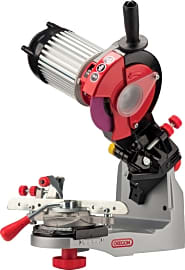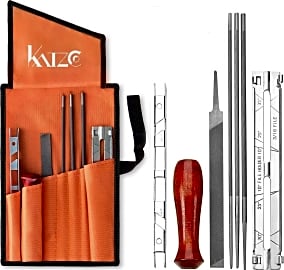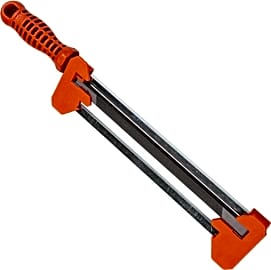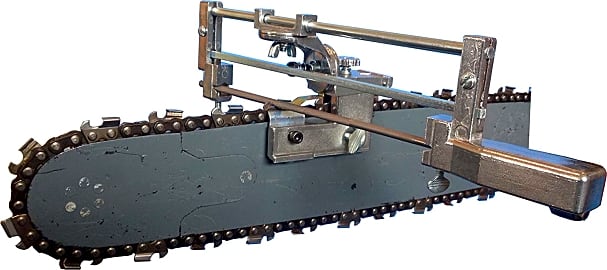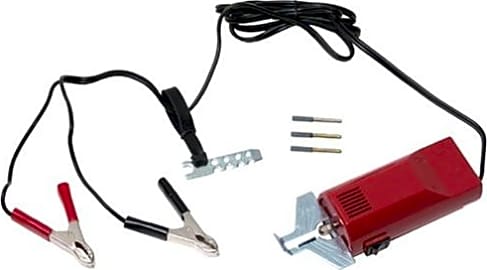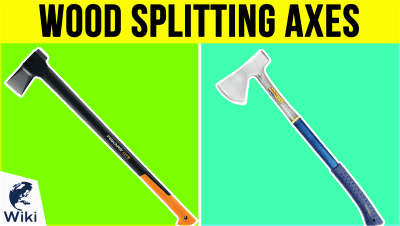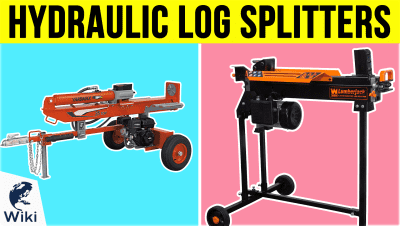The 10 Best Chainsaw Sharpeners

This wiki has been updated 37 times since it was first published in September of 2015. When it's time to maintain your equipment, having a chainsaw sharpener will help get the job done quickly and effectively, and ensure you get the most life out of your gear. Our selections have something for everyone, from the home DIYer to the professional lumberjack, and includes both bench-mounted models and portable ones for use in the field. Always take precautions when handling a chainsaw. When users buy our independently chosen editorial picks, we may earn commissions to help fund the Wiki.
Editor's Notes
November 09, 2020:
We removed the CO-Z Electric and the Timber Tuff CS-BWM, both of which appear to suffer from quality control issues. We made sure to replace one of these with another bench grinder-style model, the Oregon 310 Mini. This is an affordable, light-duty model that clamps right to your workbench or tabletop. Its vise locks your chain securely in place while you work, making it really simple to use, and well-suited for anyone new to chainsaw sharpening.
There are several versions of a certain type of sharpener on the market, one that fits over the end of the chainsaw and uses a whetstone to sharpen the teeth of the saw at it moves. These were all poorly received and appeared to damage the chain more often than not. This design just doesn’t seem to work very well, so we didn’t include any on our list.
Keeping your chainsaw properly sharpened is important, not just for efficiency, but safety as well. Dull chainsaw blades tend to lead to operators having to force the chainsaw through logs, which can cause fatigue and imbalance, both factors that can lead to accident or injury.
If you're not sure when it's time to sharpen your chainsaw chain, a good rule of thumb is to look for the size and shape of the wood debris flying out of the log as you saw. Fine sawdust is a sign of a dull blade, as opposed to larger wood chips.
If you're looking to turn your downed logs and trees into firewood, you'll need a dedicated wood splitter. Or, if you want something a little more heavy-duty, these hydraulic log splitters might be a better choice.
December 04, 2019:
Added the Husqvarna 531300081 and the Husqvarna SharpForce. Both models are conveniently portable - often you'll be too far from power sources to use benchtop sharpeners. Also, with these models there is no need to remove the chain. The combination gauge on the 531300081 is especially useful for beginners who still haven't gotten used to keeping a good angle on their file. An added benefit of the hand file-style sharpeners is that you won't have to carry a separate sharpener for your axes and hatchets - the bastard file is very effective at producing a usable edge on both of those tools.
The Timberline Sharpener combines the best properties of electric grinders and hand filers. It is small enough to carry into the field but it removes human error by incorporating an optimal 30 degree angle on the grinder guide. You can keep the chain on the saw because the tool mounts onto the bar and the chain can be moved through the port after sharpening each tooth.
Chainsaws are extremely dangerous tools so good form and blade awareness should be used to prevent injury. Never tamper with the chain brake as doing so removes the layer of protection when the saw kicks up.
Choosing The Right Chainsaw
Limbing is the process of cutting most or all branches off a tree before or after it is felled.
When choosing the right chainsaw, first consider the type of cutting to be done, then think about which saw you'll buy. As a general rule of thumb, a chainsaw's blade should be 30% longer than the thickest cut it will make, so if you are felling trees 24 inches in diameter, select a saw that has a guide bar (the main length of the cutting surface, e.g.) that's at least 34 inches in length.
When dealing with trees and lumber (as opposed to demolition work or other applications), chainsaws are used for four primary cuts. The most common is felling, which is the act of cutting down trees. Trimming is the shaping and pruning of a live tree for aesthetics or tree health. Limbing is the process of cutting most or all branches off a tree before or after it is felled. Finally, bucking refers to cutting a log into smaller usable and/or portable sections.
Choosing the right saw for your purposes means considering more than just blade length, it also means considering power source and torque.
The primary differences between electric chainsaws and gasoline powered saws are size and power. Electric chainsaws tend to be smaller than their gas powered counterparts, and usually deliver less torque, meaning the are only suitable for smaller cutting jobs. While electric saws mean the sacrifice of some power and size, they are also usually much lighter weight and more compact than gas powered chainsaws, and that makes them easier to use for smaller or less physically able operators, and it also means easier storage. It's also much easier to maintain a saw that requires no liquid fuel or gas and oil blending, and you're unlikely to run out of electric power.
Ultimately, a gas powered chainsaw is the more versatile, useful tool, and not only thanks to the potential for more power and cutting range: a gas saw doesn't have to be plugged in to work, so you can bring one with you anywhere, from the construction site to the back woods to the back yard.
Chainsaw Sharpening And Maintenance
Almost all gasoline powered chainsaws use a two-cycle internal combustion engine and do not have separate reservoirs for engine oil. That means it is imperative that an operator use the correct blend of gasoline and oil, which in most cases is approximately five ounces of motor oil per one gallon of fuel; check your saw's manual to be sure. Without the correct blend of fuel and oil, a chainsaw's engine will be quickly damaged and worn out.
Along with safety goggles, a hard hat, ear protection, and work gloves, a good chainsaw sharpener is an important tool to have on hand.
Before each use of your saw, check its blade tension setting and make sure it is as specified by the manufacturer. Make sure the guide bar and blade are clean and, if need be, oiled. Also ensure the air filter is clean, clear, and in good working order.
To start a chainsaw, lay it flat on the ground and ensure the engine brake is fully engaged (the chain should not be able to budge when the brake is pushed forward into position). Open/engage the choke and prime the engine if a primer is present. Next get a solid grip on the tool, pull the starting handle, and hear the roar as the engine comes to life.
In order to make sure your saw is working up to its full potential, won't endure unnecessary wear and tear, and also is as safe a tool as possible, you need to keep it sharp. Regular chainsaw sharpening extends to life of the tool, saves you time when you use it, and reduces the risks of kickbacks, flying debris, or a saw jammed into a thick piece of lumber. Along with safety goggles, a hard hat, ear protection, and work gloves, a good chainsaw sharpener is an important tool to have on hand.
Choosing A Chainsaw Sharpener
A chainsaw blade consists of cutters, which are the teeth that do the actual cutting of the material, and rakers, which control the depth to which the teeth reach, keeping the cutting process smooth and consistent. The rakers will have to be filed from time to time, but it is the cutters that need regular routine maintenance.
Their disc can be adjusted to achieve the right angle needed for the teeth of a specific chainsaw's chain.
While it's entirely possible to sharpen a chainsaw manually using a round hand file to work on the cutting teeth, the process is laborious and rarely as effective as using a dedicated chainsaw sharpener.
Using an electric bench mounted chainsaw sharpener is the fastest way to get those cutters sharp. Most electric sharpeners look like small rotating saws, but feature grinding discs rather than saw blades. Their disc can be adjusted to achieve the right angle needed for the teeth of a specific chainsaw's chain. Check the ideal angle of your saw's blade before buying a chainsaw sharpener to make sure the two are a match, but almost all decent chainsaw sharpeners will be suitable for most chainsaws.
As an alternative to an electric chainsaw sharpener, you can consider a unit that clips into your chainsaw's guide bar and manually draws the chain through as it sharpens. You provide the power in such units by turning a crank, but unlike the process of using a hand file, the sharpening angle is still strictly maintained by the tool. While less efficient and more physically involved than an electric sharpener, this type of sharpener has the benefit of working anywhere.


